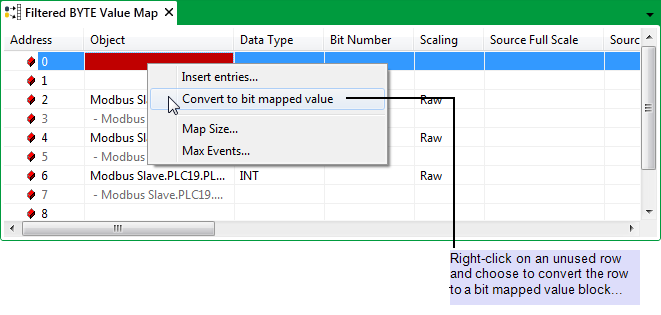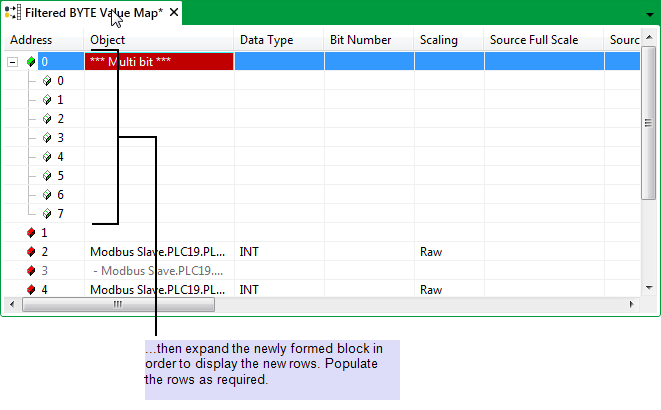With BYTE, DINT, UDINT, and WORD Value Maps and Filtered Value Maps, you can choose to map individual bits of a value, rather than the whole byte or word, and so on.
To map single bits of a value in one of the above map types:
- Right-click on an unused row in a BYTE, DINT, UDINT, or WORD Value Map or Filtered Value Map.
A context-sensitive menu is displayed. - Select the Convert to bit mapped value option.
The row is converted to a multi-bit block. The number of rows in the block varies, depending on the type of map (8 for a BYTE, 16 for a WORD, and 32 for DINT and UDINT). - Expand the block and populate the rows as required, to each map individual bits of a variable, point, or other value.
If you try to convert a populated row to a bit mapped value, a message is displayed, warning that the existing mapped reference will be lost.
Example:
To convert an unused row in a BYTE Value Map:


To convert a multi-bit block back to a single row, in order to map a whole byte, DINT, UDINT, or Word:
- Right-click on the row labelled ‘Multi-bit’, at the top of the multi-bit block.
A context sensitive menu is displayed. - Select the Convert to word mapped value option.
The multi-bit block converts to a single row.
If you try to convert a populated block back to a single row, a message is displayed, warning that the existing mapped reference(s) will be lost.